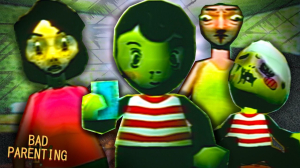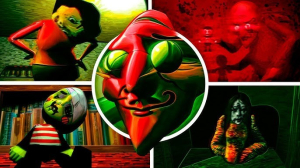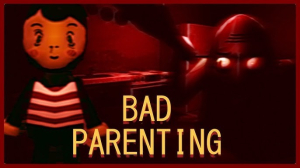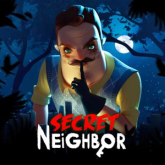
Bad Parenting



Bad Parenting
I recall the first time I booted up Bad Parenting 1: Mr. Red Face; I was immediately intrigued by the irreverent title and distinct style. I had heard whispers among friends about its unique take on parenting misadventures in a quirky, game-like environment. From the initial loading screen up to the first moments of gameplay, I was drawn into an experience that felt refreshingly unpredictable. I found myself both amused and challenged, as the game quickly set up scenarios that felt at once absurd and deeply engaging. There was a sense of rebellion against everyday norms wrapped in a humorous, yet poignant, package.
Immersive Gameplay Mechanics
Playing through Mr. Red Face, I quickly grasped that the game did not follow a standard formula. Instead of relying on familiar tropes, its mechanics encouraged exploration and experimentation. I was presented with puzzles that required both creative thinking and a willingness to embrace the unexpected. The game creators did not offer a simple menu of actions but rather allowed me to experiment with parenting scenarios that were as unconventional as they were entertaining. I found that this approach demanded attention and critical thinking, making each progression a small victory. Every decision felt personal, as if the game was testing my imagination and capacity to react when faced with unusual challenges.
Mysterious Narrative Threads
The storyline of Bad Parenting 1: Mr. Red Face is anything but straightforward. I accepted a series of quests fraught with irony, demanding not only strategic planning but also moral reflection. The narrative seems to parody the often overwhelming responsibilities of parenting through a set of exaggerated yet insightful scenarios. I appreciate that the game balances humor with depth; the characters around me, each with their signature quirks, add layers to the experience. The dialogue occasionally hints at broader social commentaries, inviting me to look beyond the immediate absurdities and consider the implications of its narrative choices.
Striking Visual Aesthetics
One of the elements that immediately captured my attention was the game’s art style. Mr. Red Face sports a color palette and character design that are both bold and stylized. I was impressed by the juxtaposition of whimsical visuals with the more challenging aspects of gameplay. Every scene seemed to be deliberately crafted to evoke a mixture of humor and tension. The backgrounds, character animations, and use of lighting effectively contributed to creating an environment that felt both surreal and immersive. I found myself lingering on each detail, appreciating the care put into every visual element that complemented the game’s unconventional narrative.
Sound and Music: An Auditory Journey
The sound design and musical score in Bad Parenting 1: Mr. Red Face play a crucial role in setting the tone for my journey through the game. I noticed that the audio dynamically shifted alongside the narrative, enhancing both the playful and somber moments. The score is both catchy and occasionally melancholic, clearly underscoring the whenever a significant narrative twist occurred. Sound effects are carefully selected to amplify humorous sequences or emphasize moments of tension. I found that the music in particular elevated my emotional investment, reinforcing the idea that every misstep or clever decision was part of a larger, highly crafted experience.
Delving into Complex Character Dynamics
As I progressed, I discovered that the character interactions were layered with both sincerity and satirical commentary. The protagonist, portrayed through my own choices, is not merely an observer but an active participant in a world where the norms of parenting are turned on their head. The supporting characters, including Mr. Red Face himself, are layered with a multitude of traits that can be both hilarious and thought-provoking. I encountered interactions that made me smile at the absurdity yet lingered in contemplation about their deeper meanings. The game allowed me to form connections with these characters, making the experience feel personal and reflective of real-life complexities.
Innovative Level Design and Environment Exploration
The design of the various levels within the game is remarkably inventive. Each environment presents its own set of challenges that force me to adapt my strategy continuously. I appreciated how the game did not resort to repetitive gameplay but rather introduced new elements as I advanced through different scenarios. It was refreshing to see how bridges between levels were intentionally designed to meld the domestic with the bizarre, sometimes combining puzzles with unexpected narrative elements. I took particular note of the interior designs that evoked a sense of familiarity even as they were overlaid with a humorous twist, leaving me often to marvel at the clever integration of design and functionality.
Humor Infused with Satire and Wit
Humor in Mr. Red Face is far from superficial. I found that every scenario, dialogue piece, and minor side quest was imbued with a sense of satirical wit that offered commentary on modern social and familial norms. The game’s creators managed to infuse playful absurdities into each interaction while subtly questioning conventional parenting wisdom. I laughed while also being nudged to think more critically about the roles we play in everyday life. The blend of quirky scenarios with sharp observations made the experience not only entertaining but also unexpectedly insightful.
Unpredictable Pacing and Surprising Twists
The pacing of the game is another aspect that kept me thoroughly engaged. Unlike many titles where the narrative follows a predictable arc, Mr. Red Face thrives on its unpredictable rhythm. I found that certain scenes developed at a leisurely pace, allowing me to absorb the environment and think through my choices. Conversely, other moments were packed with a rapid succession of events that tested my reflexes and decision-making abilities. This unpredictability often left me both exhilarated and determined to solve the puzzles thrown in my path. It was akin to living a very personal, interactive story where every decision led to surprising twists and subtle revelations about the underlying story.
Social Commentary Woven into Gameplay
One of the most provocative elements of Bad Parenting 1: Mr. Red Face is its social commentary. Through the lens of an exaggerated scenario of parenting, I was made to confront aspects of society that are sometimes overlooked or taken for granted. The game cleverly employs humor to dissect various social expectations and the contradictory pressures placed on individuals. I could not help but reflect on my own experiences and recognize the familiar struggles mirrored in the overblown situations depicted in the game. This meta-narrative behind the gameplay enriched my experience, challenging me to discern between the literal and metaphorical layers of the narrative.
Interactivity and Player Empowerment
The level of interactivity in the game significantly enhanced my journey. I appreciated that the game encouraged me to explore diverse ways of approaching problems without forcing a singular method of play. Instead, it offered a sandbox-like environment where experimentation was rewarded with unexpected outcomes. The level of freedom allowed me to deviate from the intended path and create my own narrative fragments within the larger story. This empowerment felt like a breath of fresh air, reminding me why interactive storytelling can be such a compelling medium. I also valued the game's ability to adapt to my play style, making each playthrough feel both personalized and authentically immersive.
Emotional Engagement and Personal Reflection
What stood out to me most was how emotionally engaging the experience became over time. Every choice I made, whether it involved following the main storyline or indulging in one of the many side-quests, had the potential to evoke a wide spectrum of emotions. I felt genuine amusement during the lighter moments, a twinge of sadness during more reflective sequences, and even a surge of determination during complex puzzles. The game invited me to invest emotionally in its narrative and its characters, and I found that my attachment deepened as I uncovered more layers of the story. This blend of humor, challenge, and occasional melancholy made the experience resemble a piece of interactive art rather than just a series of game mechanics.
Innovative Use of Game Interfaces and Controls
From a technical standpoint, I was particularly impressed by the way the game handles its user interface and control schemes. The intuitive design ensured that, despite the often chaotic narrative, navigating the game world remained accessible and engaging. I appreciated minimalistic overlays that did not distract from the overall gameplay but rather enhanced the immersion. The controls were responsive and refined, ensuring that every action felt deliberate and meaningful. The thoughtful arrangement of the interface contributed to a smooth and coherent gaming experience, making it clear that the developers placed considerable emphasis on ensuring that technology and narrative worked in harmony.
Exploration of Unconventional Parental Themes
Bad Parenting 1: Mr. Red Face delivers more than just a game; it presents an exploration of modern parenting through a surreal lens. I found it particularly stimulating how the game subverts traditional expectations of what it means to be a parent. The scenarios, while over-the-top, cleverly illustrate the challenges, inconsistencies, and sometimes humorous pitfalls of everyday parenting. I was constantly amused by the contrast between the absurd circumstances presented and the underlying realism in the characters’ decision-making processes. This duality invited me to laugh at the chaos while also contemplating the responsibilities we often take for granted in our own lives.
Layered World-Building and Environmental Storytelling
Every corner of the game world felt meticulously designed, with environmental cues that added depth to the overall narrative. I often discovered subtle hints about the world’s backstory embedded in the smallest details—a misplaced item here, an offhand remark there—all of which pieced together a broader historical context for the absurd events unfolding. The artful use of space and environmental storytelling encouraged exploration. I found myself constantly scanning the surroundings for clues and details that could enrich my understanding of the narrative framework. This layer of world-building transformed routine puzzles into fascinating journeys through an interactive caricature of reality, making each setting not just a backdrop but an integral component of the story.
Depth Through Interactive Challenges
One aspect that particularly resonated with me was the way interactive challenges were seamlessly woven into the fabric of the game. Rather than feeling like mere obstacles, these challenges were interlaced with thematic content that continued the narrative's exploration of unconventional parenting. Each challenge required me to think on my feet, engage with the surrounding environment, and sometimes even alter my approach mid-game. I was frequently surprised by how each new set of challenges reinvigorated my enthusiasm and kept the gameplay fresh, ensuring that even after extended sessions, there was always a sense of discovery and innovation waiting just around the corner.
Cultivating a Sense of Ownership in the Narrative
Throughout my journey in Bad Parenting 1: Mr. Red Face, I experienced a sense of ownership over the unfolding narrative that few games manage to evoke. The game places significant emphasis on letting each decision influence not only immediate outcomes but also the longer narrative arcs. As I navigated complex scenarios, my choices often reverberated in unexpected ways, cultivating additional layers of depth and engagement. This structure made my playthrough feel uniquely personal, as if the game itself acknowledged and adapted to my individual decision-making. I found it immensely rewarding to see how even the slightest deviation in my approach led to new interactions, unexpected plot twists, or reinvigorated challenges that made me appreciate the game’s intricate design even more.
- Unique narrative style that subverts conventional themes
- Engaging puzzles that require creative thinking
- Visually bold environments with meticulous design
- Dynamic sound design that enhances emotional depth
- Responsive controls paired with an intuitive interface
- Evolving character interactions that foster personal investment
- Occasional pacing imbalances that may disrupt the narrative flow
- Complex mechanics that could overwhelm new players
- Humor that may not resonate with every audience


